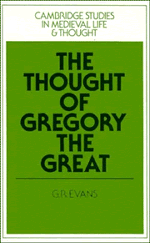Book contents
- Frontmatter
- Contents
- Preface
- Acknowledgements
- List of abbreviations
- INTRODUCTION
- PART I CONSIDERATION
- PART II TALK OF GOD
- Gregory's world of discourse
- Language
- Signs, prophecy and miracles
- Speculative theology
- Moral theology
- The art of preaching
- The preacher
- Exegesis
- PART III INWARD AND OUTWARD: SPIRITUALITY IN THE WORLD
- CONCLUSION
- Select bibliography
- Index
- Frontmatter
- Contents
- Preface
- Acknowledgements
- List of abbreviations
- INTRODUCTION
- PART I CONSIDERATION
- PART II TALK OF GOD
- Gregory's world of discourse
- Language
- Signs, prophecy and miracles
- Speculative theology
- Moral theology
- The art of preaching
- The preacher
- Exegesis
- PART III INWARD AND OUTWARD: SPIRITUALITY IN THE WORLD
- CONCLUSION
- Select bibliography
- Index
Summary
If a preacher does not denounce the wicked, he himself will be reckoned guilty, says Gregory (Ezi.xi.22, p. 179.382–3). Augustine of Hippo would admonish his congregations and they would applaud. Preaching was a lively and even theatrical business in the late Roman world; the preacher engaged his audience by encouraging them to respond aloud.
The preacher of the late antique world took his style from the orator. In the high days of Rome and even in Augustine's time, every educated man was trained in public speaking. The emphasis was upon fluency and persuasiveness. The orator had to be able to think on his feet and to that end he was taught outline arguments and made to memorise a large stock of illustrations and comparisons and stories and images. He delivered his speech with appropriate gestures, using his eyes and hands as well as his voice to make his point. He was taught to watch his audience's response and to meet it, working upon their emotions as well as upon their minds. Even if only a pale shadow of this rhetorical education was available to Gregory, his audience's taste for the vivid and graphic, the exciting and surprising, was clearly much the same as that of Augustine's listeners. His preaching retains an air of the live delivery of ideas, filled out and explored before the audience as they occur to the preacher.
- Type
- Chapter
- Information
- The Thought of Gregory the Great , pp. 75 - 79Publisher: Cambridge University PressPrint publication year: 1986



